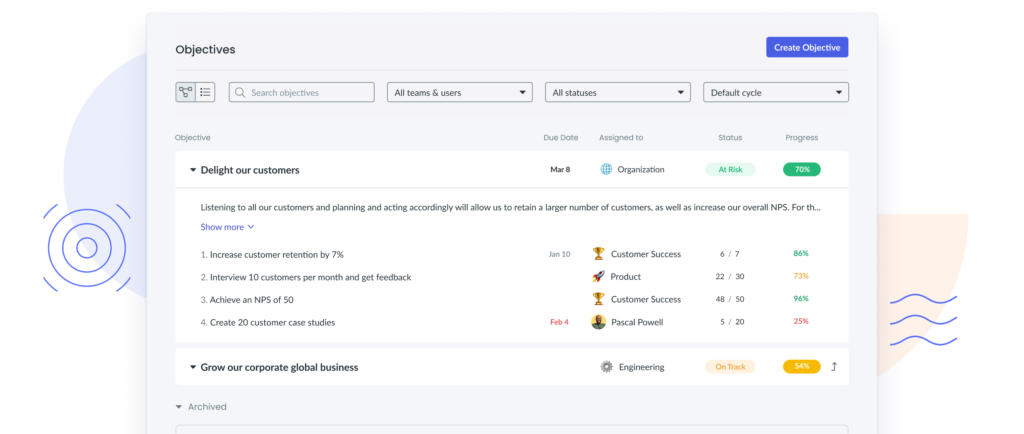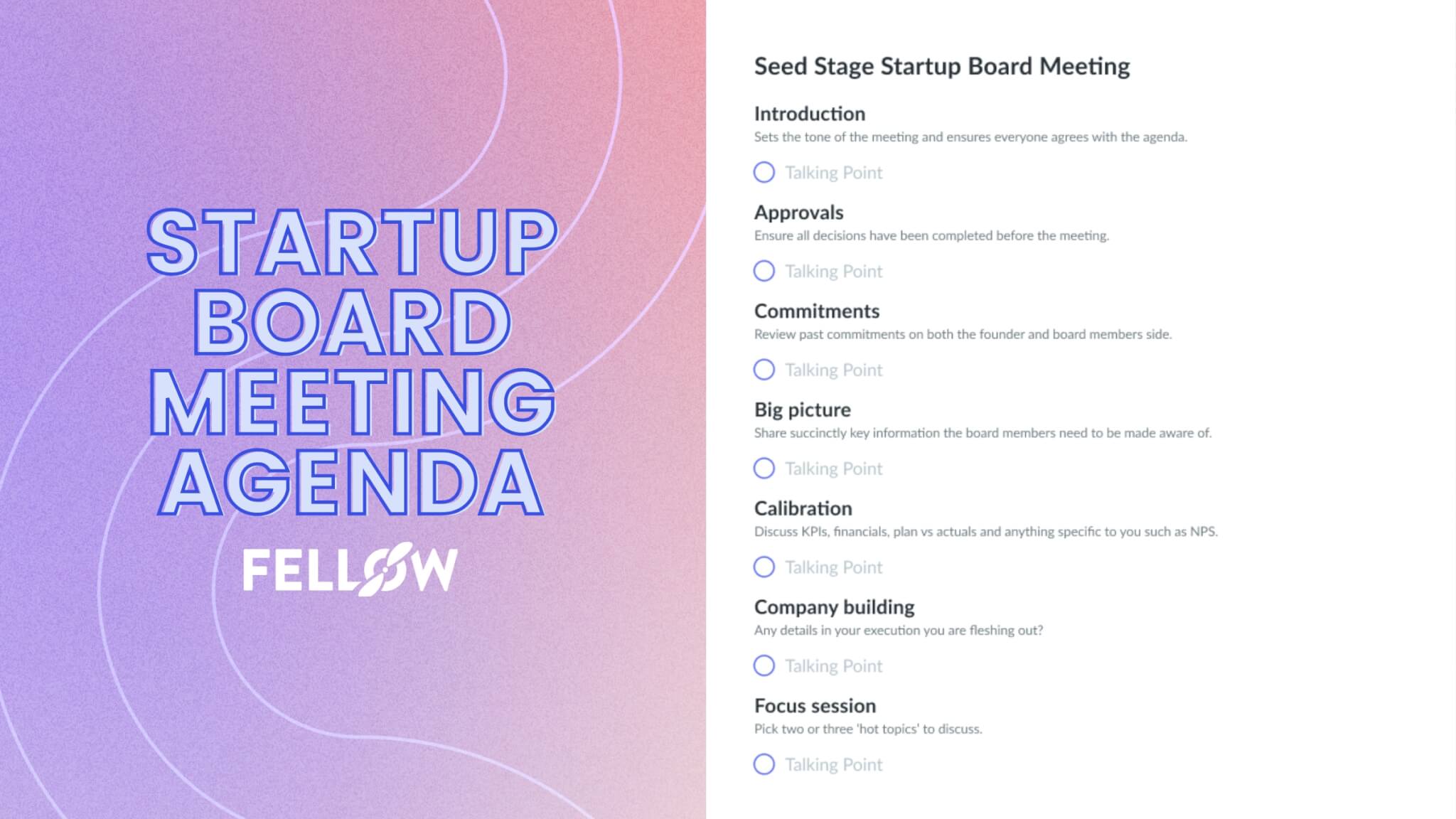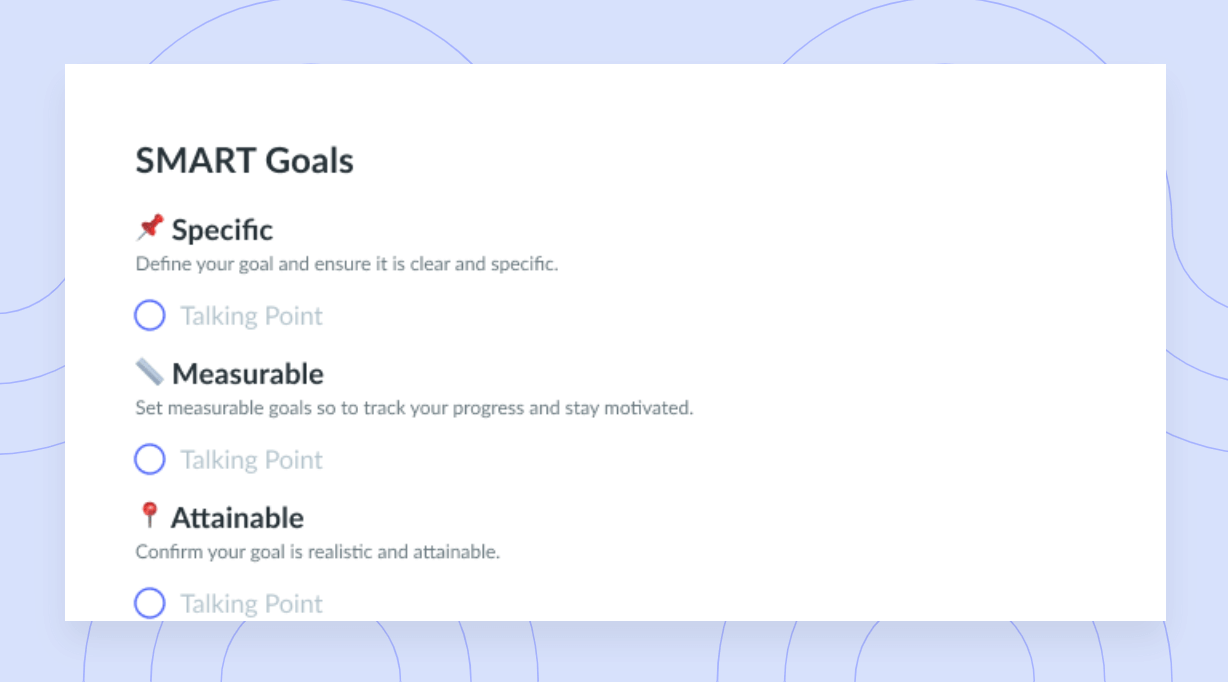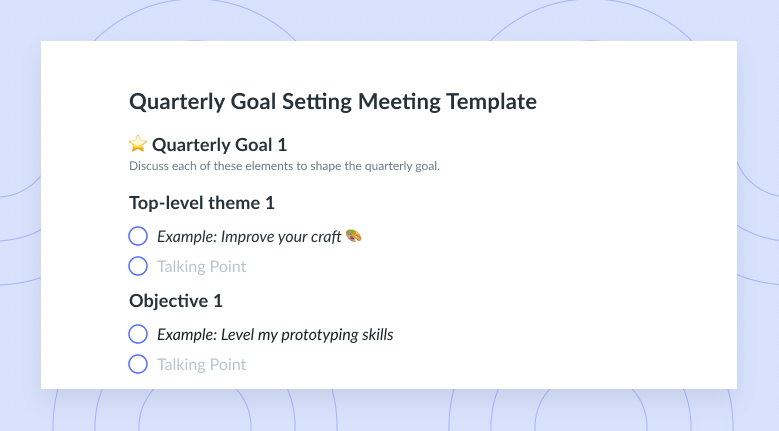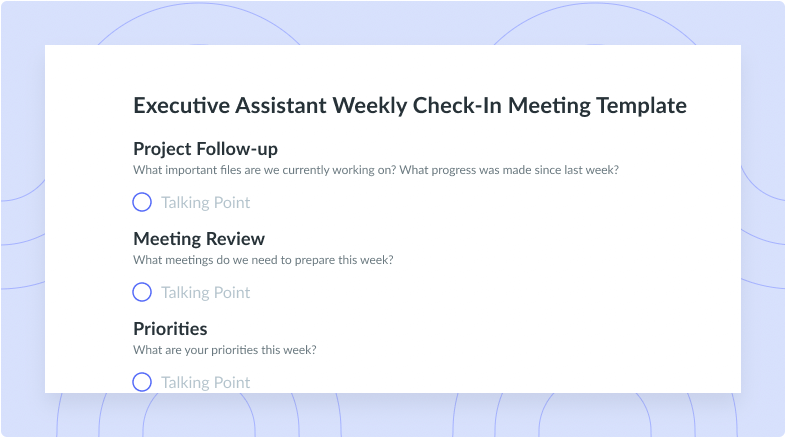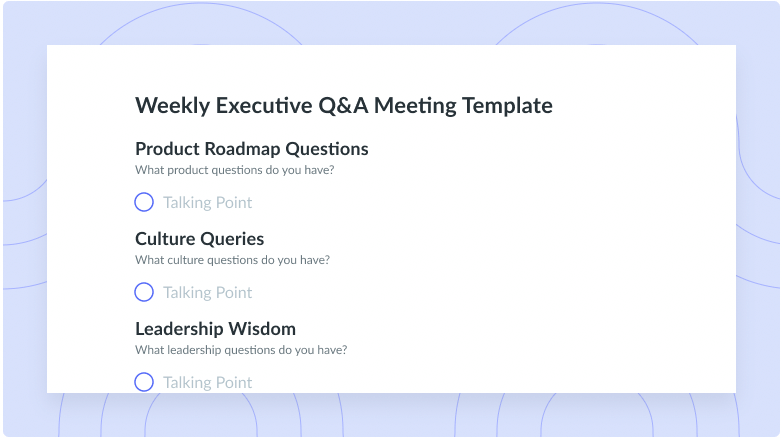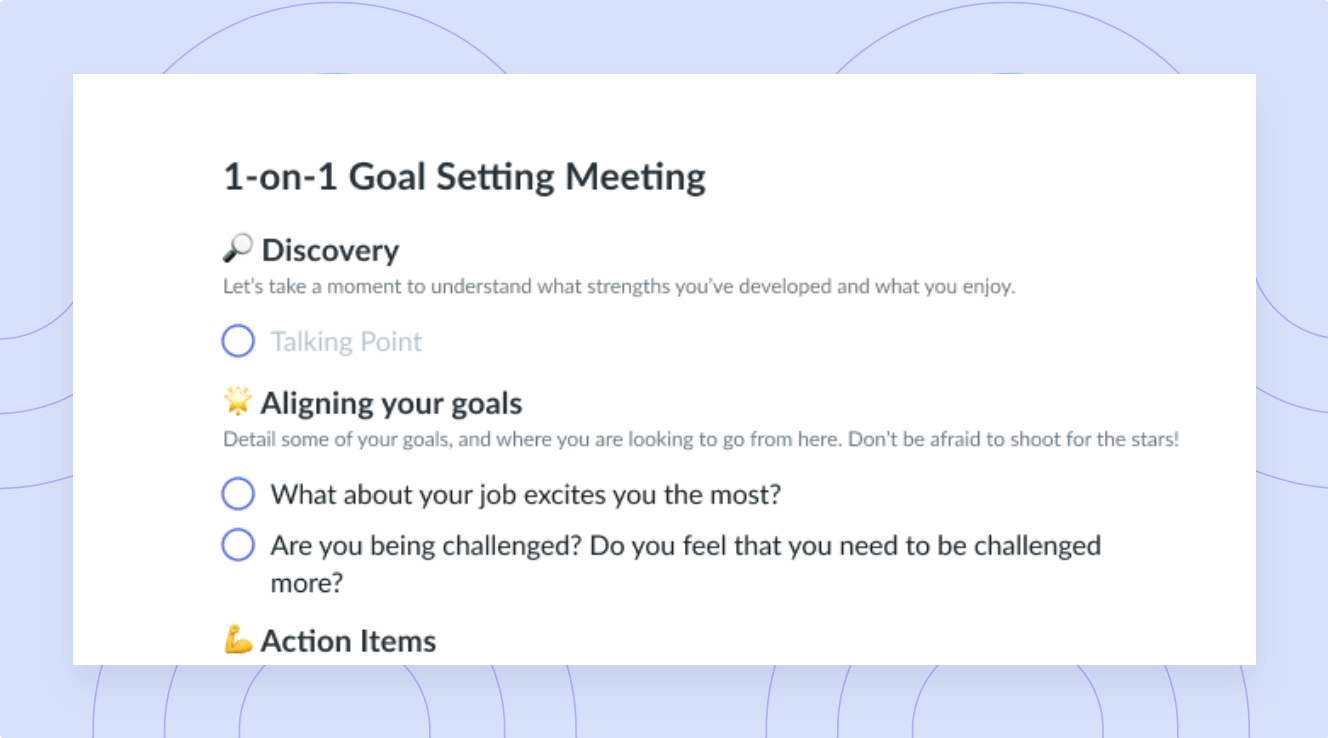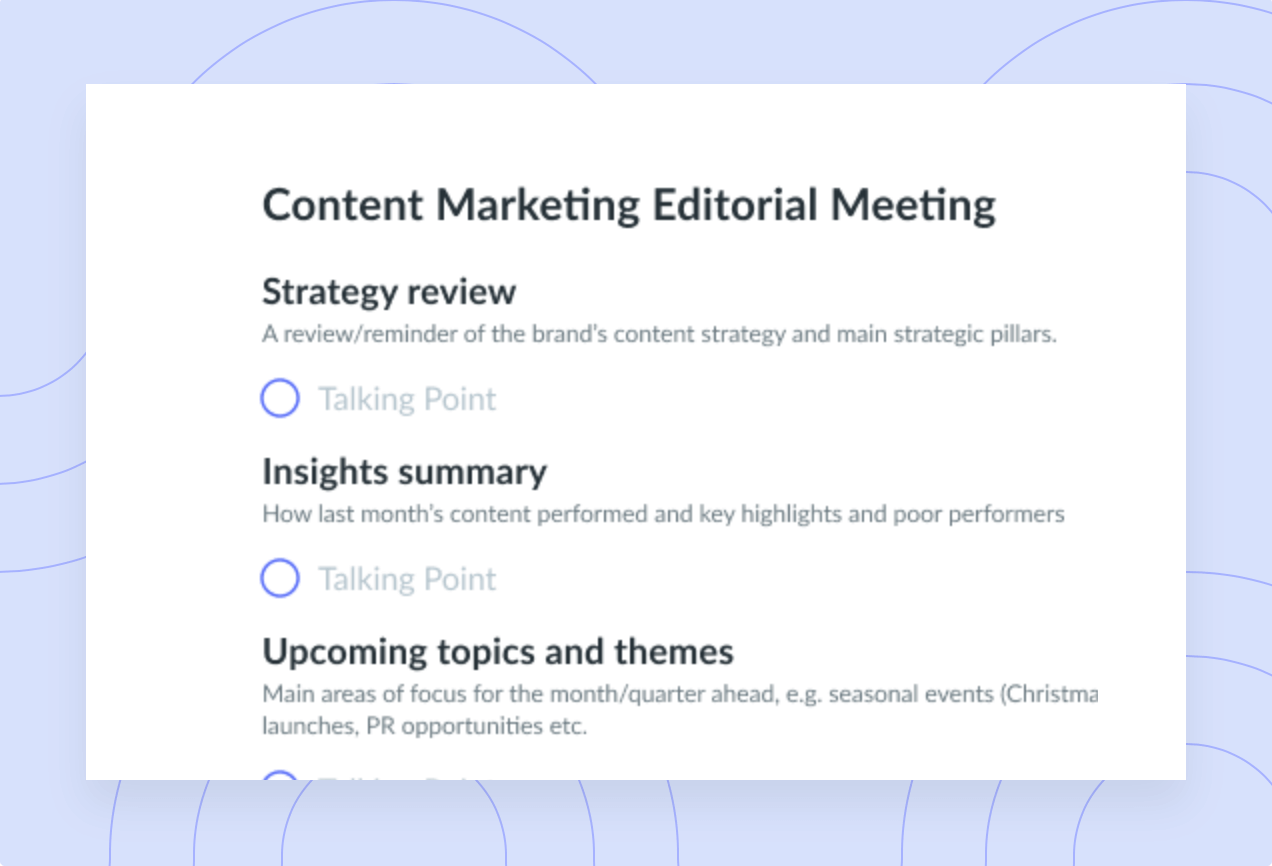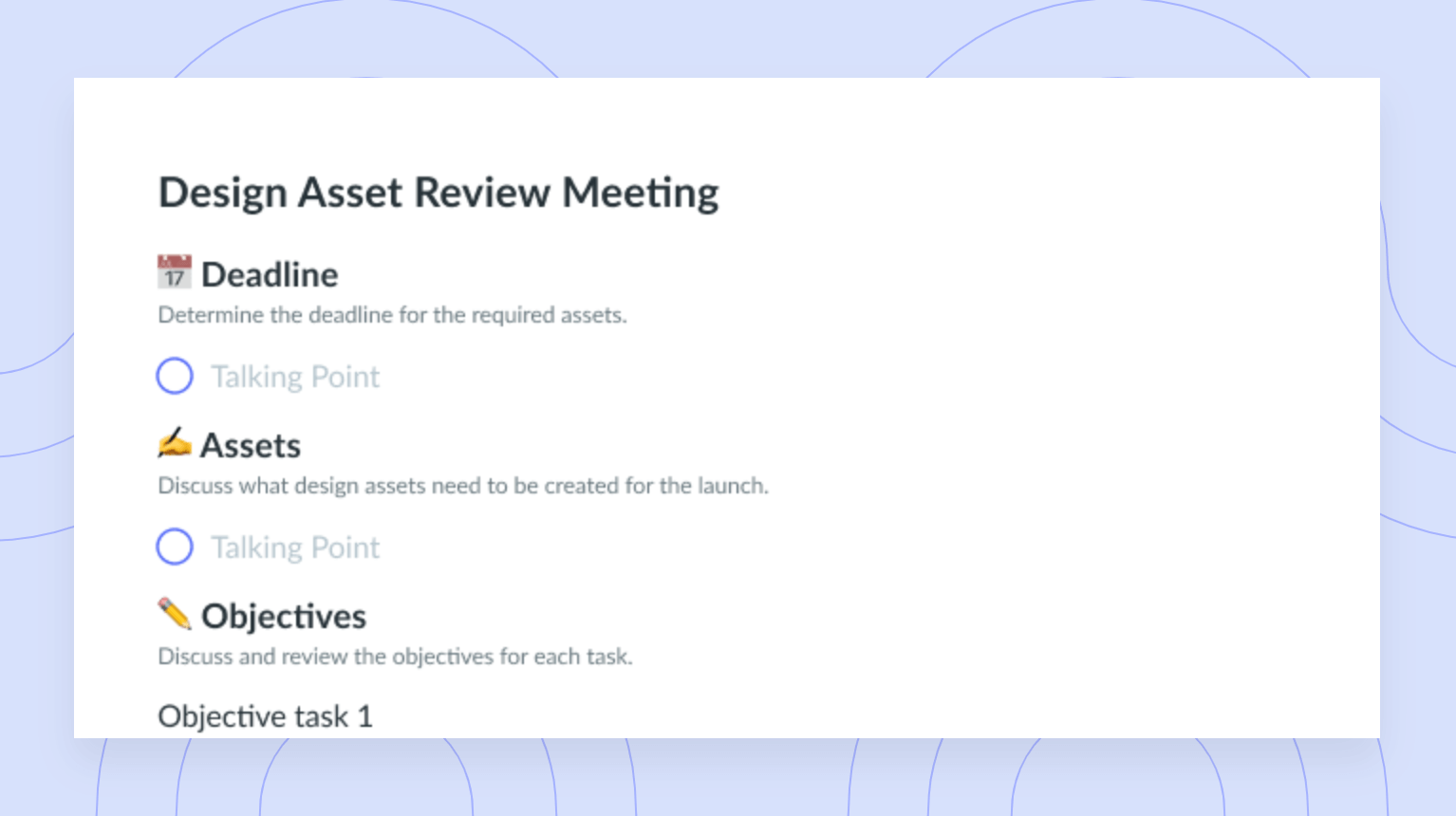SMART Goals for Executive Assistants: Importance & Examples
Supercharge your success as an executive assistant by setting SMART goals. Unlock your full potential with our guide (+ free template).
We’ve all heard the term “wears many hats” when talking about a specific role at a company, but that cannot be more true for an executive assistant (EA). An EA is an administrative professional within a company that assists the executives or C-suite level employees with responsibilities and tasks daily. An EA may also be in charge of making sure office functions and specific operations run smoothly.
Essentially, the day-to-day role looks very different for an EA depending on their industry and what’s currently happening in the organization. Because of this, it’s crucial to have clear, concise, and meaningful SMART goals lined up for executive assistants.
SMART goals are:
- Specific: Is the objective clear to both you and your executive? Is it concise?
- Measurable: Do your objectives have a clear path to success? How will you know when the goal has been completed? Does success look the same for both you and your executive?
- Achievable: Are the objectives you’re setting attainable? Do you have the personal and professional capabilities and the right software and tools to complete these goals?
- Relevant: Do your objectives fit into the overall purpose of your EA role? Do they align with your organization’s goals and help the company succeed?
- Time-bound: When is the deadline, and what milestones do you need to hit along the way? Have you given yourself enough time to succeed?
It’s essential to go through each part of the SMART acronym when determining the best goals for an executive assistant.
- Importance of setting goals for executive assistants
- 7 steps to crafting effective SMART goals as an executive assistant
- Practical examples of SMART goals for executive assistants
- Unlock your goals with our free executive assistant SMART goals template
- Achieve success with SMART goals and Fellow
Importance of setting goals for executive assistants
As we mentioned, an executive or administrative assistant wears many hats, no matter how big or small the company may be. Promoting their career growth by having SMART goals set can help an EA track their progress and be intentional about improving their job satisfaction.
The right individual for this role wants to ensure they’re doing the best job possible. Plus, having these professional goals in place makes it easier for the EA to:
- Help the company stay organized and on track toward specific success metrics
- Assist other staff members as needs arise
- Improve their skill set and make the most of the responsibilities and tasks they’re given

Simplify goal-setting and tracking
Fellow seamlessly integrates goals and OKRs into everyone’s meetings so they’re always top of mind, trackable, and part of discussions and decisions.
7 steps to crafting effective SMART goals as an executive assistant
It’s not always easy to set goals for an executive assistant, but doing so is possible. Deciding on which goals to focus can be the most challenging part of creating a growth plan for this type of role. Consider these seven steps as you develop actionable and personalized SMART goals for the best chance of success.
- Create themes for your goals
- Align your goals with the company mission
- Improve your qualifications
- Get outside feedback
- Keep your goals easily accessible
- Understand the ‘why’ behind goals
- Keep track of progress
1Create themes for your goals
The first step in creating SMART goals for executive assistants is thinking of themes for these goals. To come up with themes, start by pinpointing the general aspects of your day-to-day professional life, what is frequently on the list of things to do, and how you want to improve.
As you go about goal-setting, identifying themes is a smart (no pun intended!) way to provide a clear starting point. For instance, you can choose themes like personal performance goals, improved productivity, better organization, leadership, or advanced event planning.
Consider the areas where you think you need the most improvement and the most growth, and what themes align with those areas.
2Align your goals with the company mission
As an executive assistant, rather than a personal assistant, you need to set SMART goals for yourself that also positively impact the organization. To know the best ways to have this impact, read through the company’s mission statement and pinpoint the areas that you can relate to or feel your job as an EA directly impacts.
If you can align the SMART goals you set for yourself with the organization’s short- and long-term team goals, you can better identify the path you should take and the goals you need to set for yourself.
In addition to familiarizing yourself with the company’s mission statement, have a conversation with the executive you work with the most and understand their goals and how they align with the mission statement. This knowledge can point you in the right direction, too.
3Improve your qualifications
Next, revisit the EA qualifications you already have and which ones you’d like to improve. These skills can be anything from time management to organization or communication. If you’re unsure where to start, you can even research job descriptions for EA roles at different companies and see how your experience compares.
When you refine and improve the soft and hard skills that make an EA stand out and shine in the eyes of other employees, you’re setting yourself up for a better chance of earning a potential raise or promotion. Doing so also ensures you stay competitive should you seek a job elsewhere.
4Get outside feedback
Sometimes, you never know what to work on or strive to improve unless you ask. When setting goals, getting outside feedback from your manager, supervisor, boss, or executive can be extremely helpful in pinpointing where you need to improve.
You don’t need to wait for your next performance review. Ask these people what type of growth they’d like to see from you in the future and where they think your skillset needs work. Similarly, ask them which skills they admire most or where you excel. Having feedback that pertains to your strengths and weaknesses can show you areas where a SMART goal is warranted.
Fellow’s feedback feature makes it easy to ask for and track feedback about projects and performance, enabling you to seamlessly incorporate them into your day-to-day experience.

5Keep your goals easily accessible
A good way to hold yourself accountable to your goals is to keep them in a place that’s easily accessible. Maybe you have a virtual post-it on your computer background where you can see the goals every day. Or, perhaps the goals are printed out and thumbtacked above your desk. Or, best of all, use the objectives feature in Fellow to always stay on track, especially if the deadline for one of the goals is fast approaching.
Having your SMART goals in a location where you see them regularly ensures they’re always top of mind so you can stay focused on the finish line.
6Understand the ‘why’ behind goals
It’s key to know why you set each goal to understand why they’re important and stay motivated to achieve them. If you have a long list of SMART goals with zero understanding of how they help others or assist the company in reaching a milestone goal, you’ll likely lose motivation along the way.
7Keep track of progress
Keeping track of your progress towards your goals, especially those with a hard-and-fast deadline, is a must. Whether you keep tabs on progress on your own time or bring up your goals in meetings with your boss, keep track of where you are and whether anything needs to be adjusted to ensure the goals are met on time.
Practical examples of SMART goals for executive assistants
Need some examples to get you started? Here are four SMART goal examples that can be applied to executive assistants.
1Business-related
A business-related SMART goal could be to improve the onboarding of new employees. This may look like:
- S: The objective of the onboarding process is clearly defined, and it has buy-in from the manager.
- M: The goal can be measured based on feedback from new hires and based on a survey or direct feedback.
- A: This is an achievable goal.
- R: As hiring ramps up, and with a company goal of enhanced company growth, ensuring new employees are onboarded correctly can set everyone up for success, improve employee morale, and reduce turnover.
- T: The goal is to overhaul and improve the onboarding process before hiring ramps up at the start of the next half.
2Skill-related
If you have a skill-related SMART goal, like to improve your organization and scheduling skills, it may look like:
- S: The objective of improving organizational skills is clearly defined, and it has buy-in from the manager.
- M: The goal can be measured based on feedback from other employees and the manager on how work and small office tasks are handled.
- A: This is an achievable goal.
- R: With so many moving parts to keep organized and things to schedule, ensuring the office runs smoothly and the CEO’s calendar is blocked and scheduled accordingly will help everyone’s workflow.
- T: The goal is to get specific feedback regarding your organization skills and whether they have improved by this half’s end.
3Task-related
An EA may have a task-related goal, which could be something like throwing the end-of-year holiday party for the entire organization. This SMART goal may look like:
- S: The objective of throwing a holiday party is clearly defined.
- M: The goal is measured by whether or not the party is a success, and if employees bonded and felt appreciated for their hard work. A company survey could be sent to get specific results.
- A: This is an achievable goal.
- R: This goal is relevant, especially as the company nears the end of the year and employees are wondering what the plan may be.
- T: This goal has a deadline of the end of the year, with various other deadlines as planning is underway.
4Personal
Finally, a personal goal may be to read five business management books by popular and well-known CEOs. That may look like:
- S: The objective of reading five business management books is clearly defined.
- M: The goal is measured by whether or not something new is learned and can be applied to the organization’s success.
- A: This is an achievable goal.
- R: This goal is relevant, especially as the company looks to learn from other organizations and see what can be worked into its own process or initiatives.
- T: This goal has a deadline of the end of the fiscal year.
Unlock your goals with our free executive assistant SMART goals template
Achieve success with SMART goals and Fellow
The sky’s the limit for what can be achieved, especially with the right SMART goals. For executive assistants, it’s crucial to prioritize both your personal and professional growth, knowing that it directly contributes to the success of the company.
To support your goal setting and tracking, Fellow is here to help. As an all-in-one meeting management software, Fellow offers various features to assist you. From setting and tracking objectives and key results to taking meeting minutes during discussions (or automating them), Fellow streamlines the process. Additionally, it facilitates effortless reviewing and sharing of important insights, decisions, and action items after each meeting.
